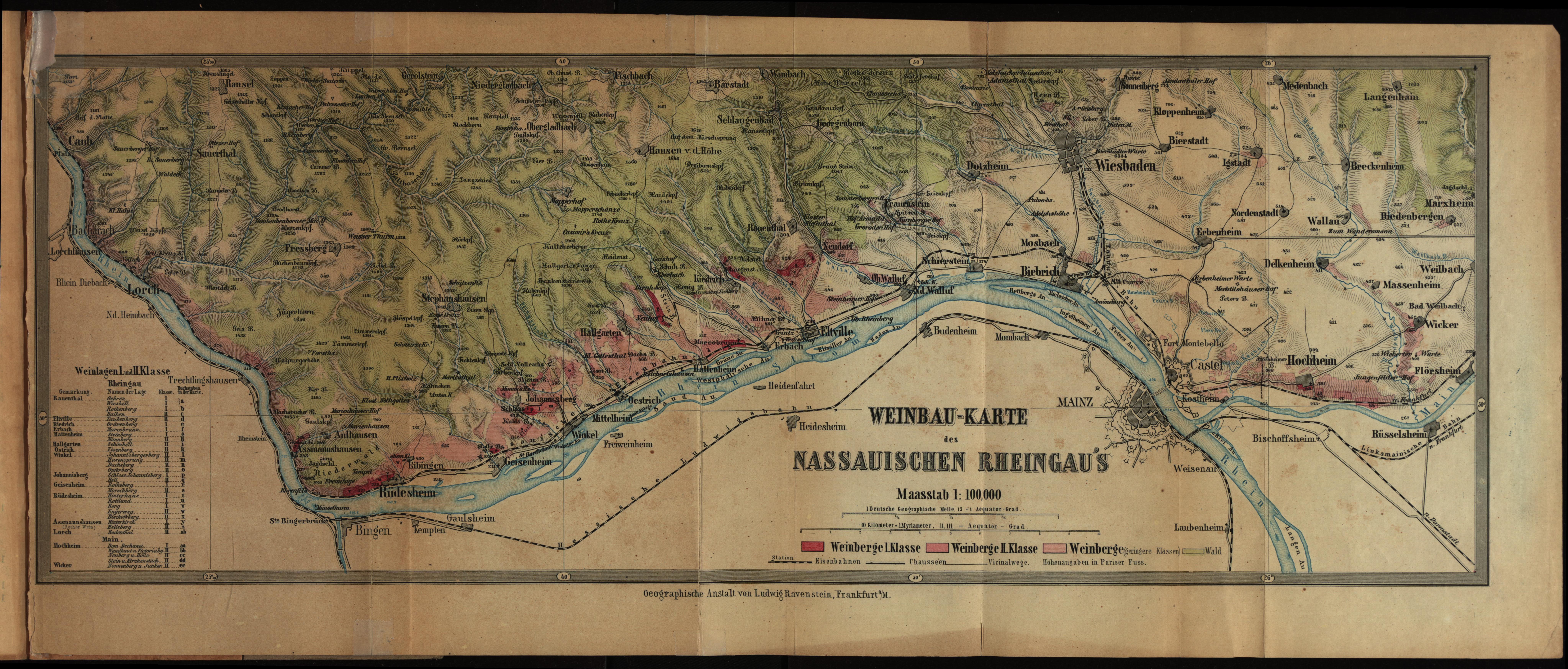Where the Rhine changes direction for almost 30 kilometres and flows from east to west, lies the Rheingau region to the north of the river. It already begins in Hochheim above the Main river, which flows into the Rhine directly at the eastern bend. From Wiesbaden onwards, the Rhine valley opens up wide and allows plenty of intense sunlight to reach the vineyards, which gently slope down from the protective and wooded ridge of the Taunus foothills southwards to the Rhine. The Rhine, which spreads out broadly here, provides a stable, mild climate as a heat reservoir and serves as a reflection surface, especially in the direction of the lower Rheingau from Rüdesheim. There the slopes become steeper and more rugged, the Rhine changes direction again and flows northwards, where it narrows considerably. The vineyards in this part of the Rheingau stretch as far as Lorchhausen. Around Assmannshausen in particular, the predominant grape variety changes from Riesling to Pinot Noir. The soils are characterised by quartzite and clay slate, especially in the steep sites of the lower Rheingau. In the middle and upper Rheingau, loess, loam, sand, gravel and marl are found.
The Rheingau is one of the most important wine-growing regions in the world. The wine-growing history of the Rheingau, which goes back well over a thousand years, can still be experienced and felt today in the many architectural monuments. The perfect conditions for producing great Rieslings and Pinot Noirs were already discovered and used in the time of Charlemagne.
The Rheingau is one of the few wine-growing regions that recognised very early on that the vineyard sites are the real capital and that the vineyards in the Rheingau have particularly high potential for great wines. The Rheingau map from 1867, rediscovered in 2011 by F.A.Z editor Dr. Daniel Deckers in the Hessische Landesbibliothek in Wiesbaden during his research, already shows the classification of vineyards. This map is the oldest vineyard classification map in the world, replacing the Mosel-Saar vineyard map for the Trier administrative district from 1869, which was previously considered the oldest.
Today, no wine-growing region in the world is so characterised by just one grape variety as the Rheingau is by Riesling. 78 % of the yield area is planted with Riesling, 12 % with Pinot Noir. Almost 3,100 hectares of vineyards are in production, 340 hectares of which are steep slopes. This makes the Rheingau one of the smallest wine-growing regions in Germany. Viticulture is still firmly anchored in the Rheingau population today. Hundreds of families in the Rheingau still own land planted with vines. The average winery size is very small. Only just over 60 wineries have more than 10 hectares of vineyards.
For all generations of owners of the wine estate, the Rheingau was and is much more than all the facts and figures. Each of the owners spent their childhood here, went to school here, grew up in the region and made friends here for life. For the family, this unique stretch of land by the water has been home and livelihood at the same time for over 150 years.





